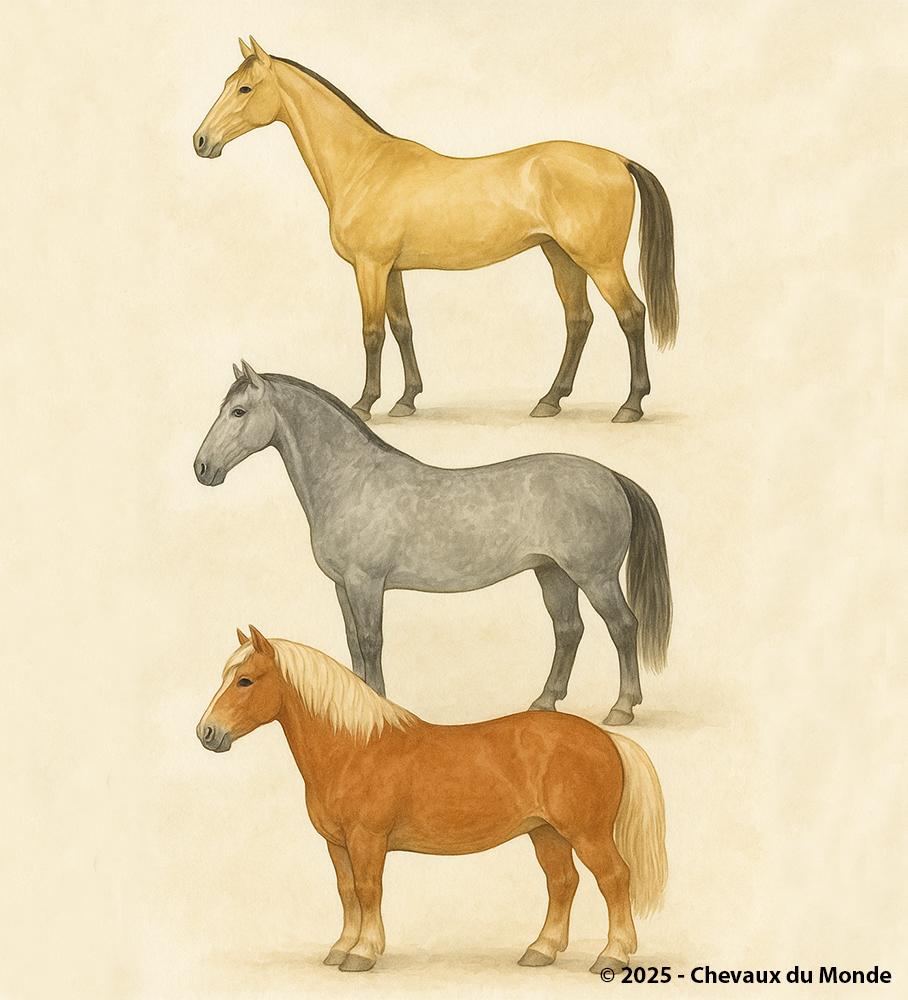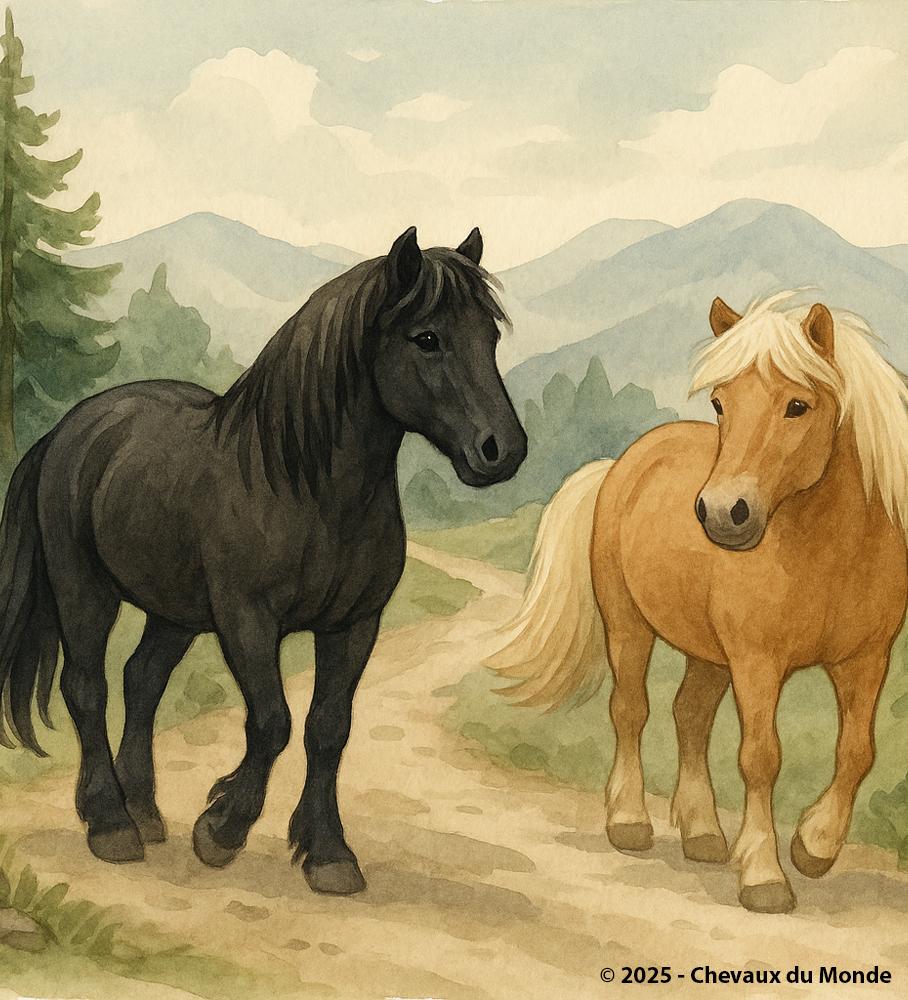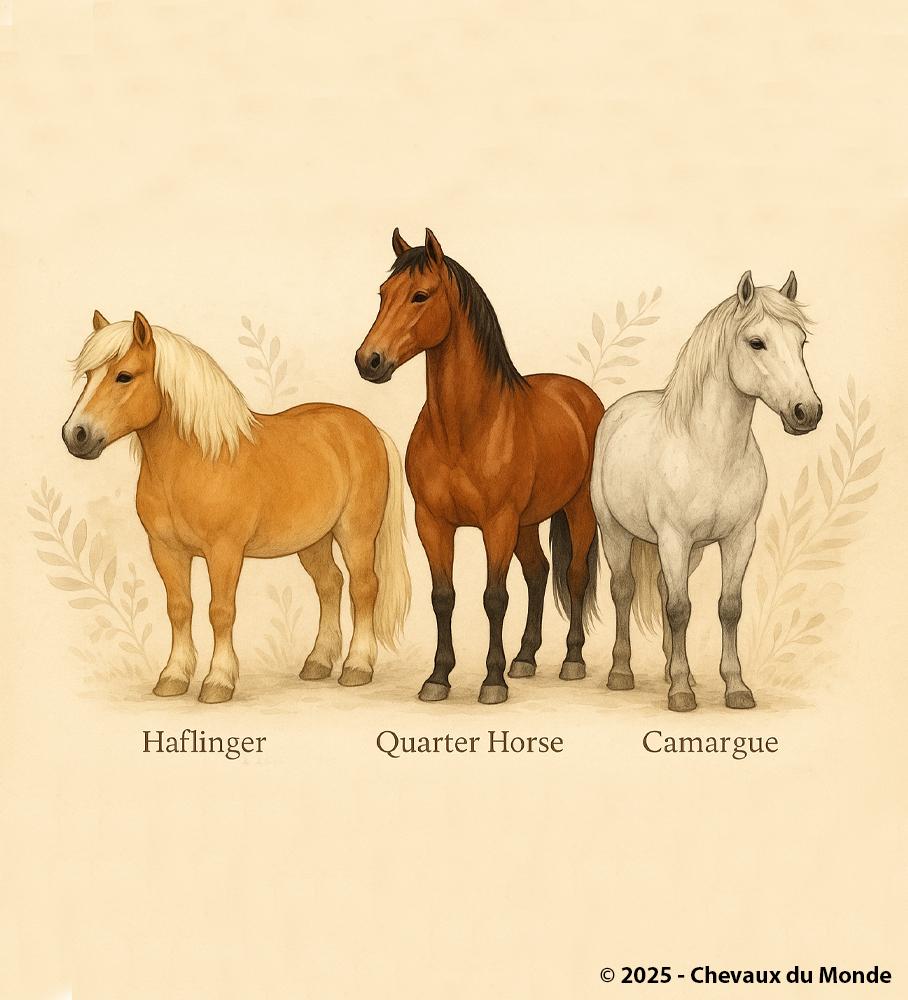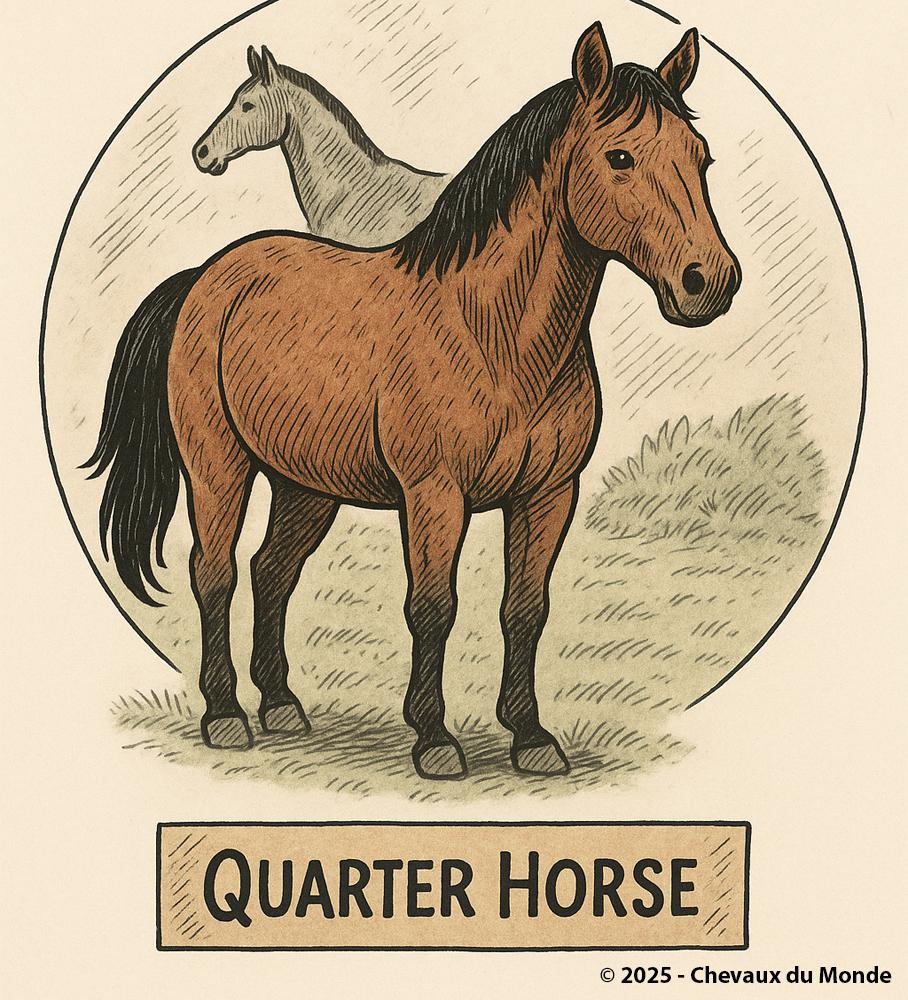TYPES OF EQUINE MORPHOLOGIES | HOW TO RECOGNIZE AND DIFFERENTIATE HORSES

Watercolor showing three equine morphologies: longiline Akhal-Teke at the top, medioline Lusitano in the middle, and breviline Haflinger at the bottom.
Equine morphology refers to all the visible physical characteristics of a horse: proportions, structure, size, profile, musculature. It results from genetic, environmental, and functional factors.
Understanding the different morphological types makes it possible to:
- Quickly identify a horse’s aptitudes
- Better adapt its training
- Optimize its well-being according to its natural abilities
In breeding, in conformation and movement shows, or when choosing a horse for leisure or sport, morphology remains an essential criterion.
1. Main Morphological Criteria
a) Size :
- Hypometric: very small size, typical of ponies and miniature horses (Falabella, Shetland).
- Eumetric: medium size, harmonious proportions (Arabian, Lusitano).
- Hypermetric: large horses, often powerful (Shire, Belgian Draft).
b) Head Profile :
- Convex (Roman-nosed): forehead and nose slightly bulging (Friesian, Mérens).
- Straight: straight line from forehead to nose (Thoroughbred, Selle Français).
- Concave (dished): slight inward curve of the nose line, typical of Arabians. (In crossbreeds like the Anglo-Arab, this feature may be lighter or absent depending on the bloodlines.)
c) General Proportions :
Three main types can be distinguished according to body length and limb structure:
- Longiline (dolichomorphic): slender build, body taller than long, fine and long limbs. Aptitude: speed and endurance (Thoroughbred, Akhal-Teke).
- Medioline (mesomorphic): balanced proportions between length and width, harmonious musculature. Aptitude: versatility (Lusitano, Quarter Horse).
- Breviline (brachymorphic): short and wide body, powerful limbs. Aptitude: strength and pulling power (Comtois, Haflinger).
2. Visual Comparison of Morphological Types
Longiline :
- Silhouette: slender, long limbs, fine neck.
- Strengths: speed, endurance, long stride.
- Typical breeds: Thoroughbred, Akhal-Teke.
- Preferred uses: racing, endurance, long-distance speed events.
Medioline :
- Silhouette: balanced proportions, harmonious musculature.
- Strengths: versatility, good balance between power and agility.
- Typical breeds: Lusitano, Quarter Horse.
- Preferred uses: dressage, show jumping, leisure riding.
Breviline :
- Silhouette: compact, muscular, short and wide body.
- Strengths: strength, stability, stamina for slow, sustained work.
- Typical breeds: Belgian Draft, Haflinger.
- Preferred uses: pulling, driving, agricultural work.
3. Quick Evaluation Example
A trained observer can identify a horse’s morphology using a few key markers:
- Height/length ratio of the body
- Proportion of the head to the neck and body
- Neck shape (long and fine, medium, short and muscular)
- Limb placement (long and fine or short and powerful)
-------------------------------------------
Equine morphology is much more than a matter of aesthetics: it determines a horse’s aptitude, health, and sporting longevity.
Understanding the differences between longiline, medioline, and breviline helps:
- Choose a horse better suited to its intended purpose
- Prevent injuries by respecting its natural aptitudes
- Showcase its strengths in competition or work
"Each morphology is a natural answer to a specific need: speed, versatility, or strength."




